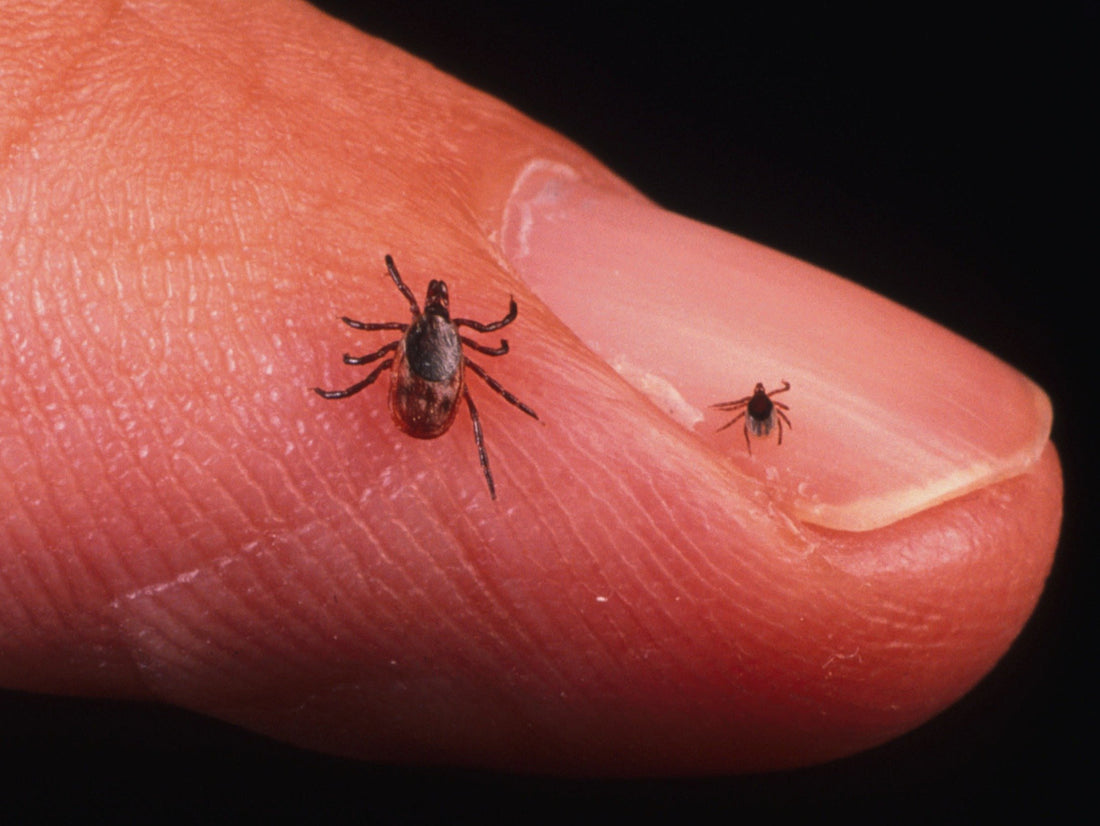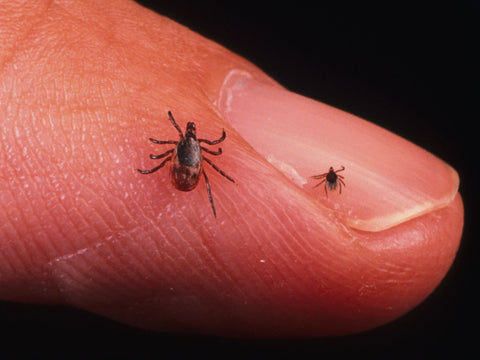
What's the Big Deal With Ticks on My Horse?
Share
What are these strange parasites, and why are they on my horse? More importantly, how do I get rid of them?
While fleas are essentially wingless flies, ticks are from the spider family. This does make a difference because of how they might interact with the horse host.
Egg – Larva – Nymph – Adult
Each stage takes a blood meal before progressing to the next stage. The larva has six legs and usually feeds on rodents. (This is when a tick typically picks up contagious diseases.) The nymph (seed tick) can be as small as a pin head or sesame seed. It will feed on rodents and mammals. The adult feeds on mammals – maybe you, maybe your horse, maybe your kids. The bites themselves can be virtually painless due the numbing technology that ticks possess during the feeding process.

Clinically, we typically have issues in the spring and fall when we are faced with sick horses that have a fever and are very dull. These mysterious fevers of unknown origins (FUOs for short) can be difficult to diagnose. Geographically, many are seen in the Northeast, Mid-Atlantic and Great Lakes areas ... the nation’s topmost hotbeds of human tick-borne disease. However, they can happen in every state.
This pattern led some to suspect that the culprits of the fever could be ticks and the difficult-to-diagnose diseases they carry. Often these horses are diagnosed with one of two diseases spread by ticks: equine ehrlichiosis or Lyme disease.
Equine Ehrlichiosis
This straightforward infection has long been referred to as equine ehrilichiosis. The disease is now officially referred to as equine granulocytic ehrlichiosis (EGE) but the causative agent has been reclassified as Anaplasma phagocytophilum. The disease is spread to horses by a variety of ticks of the species Ixodes, including deer ticks and sheep ticks. Although the severity of EGE varies, there does appear to be consistency in some of the clinical signs.
- The horse generally becomes sick three to 14 days after the infected tick bite.
- The fever in the early stage of the disease is generally very high (103° to 106° F).
- Younger horses under 4 years old tend to have mild or no clinical signs, whereas geriatric horses may become more ill.
- Others clinical signs may include lower limb edema, depression, reluctance to move, and depressed appetite.
Lyme Disease
Lyme disease seems to be a much more controversial disease that occurs frequently in humans and dogs and may occur in more limited numbers in horses.
A wide variety of clinical signs has been attributed to Lyme disease in horses. The most believable of these clinical manifestations of Lyme disease are low-grade fever, muscle soreness, stiffness and multiple limb lameness. There are published reports of a variety of other ailments associated with Lyme disease and numerous anecdotal reports of every clinical sign imaginable. Experimental infection of ponies with the Lyme organism resulted in some pathologic changes but no overt clinical signs. Until the disease can be reproduced experimentally, there will always be controversy as to the relevance of this disease in the horse.
Detecting and Preventing Ticks
Detection and prevention can be a challenge. Sometimes the ticks are evident on the face and ears, but they also can hide in the groin and “armpit” regions.
Prevention falls into two categories. First is decreasing exposure by managing the environment. Mow and remove brush to eliminate the protection that ticks need to survive while they aren't on hosts. When possible, use temporary fencing to keep horses out of areas that cannot be cleared. Habitat management is the best long-term route to reducing tick problems. In addition, cleared areas discourage wildlife, which can reintroduce ticks, and might provide improved grazing areas.
The second prevention category is spray-on or roll-on products containing cypermethrin or permethrin, which can provide protection during rides in infested areas. According to Chris Adolph, DVM, MS, DACVM (Parasitology), “Efficacy is not the challenge, it's the persistency. They [the products] just don't last very long.”
Ecovet has been earning positive reviews for its tick effectiveness and duration of action. Dust, dirt, perspiration and water shorten protection time, making reapplication an important part of the protection plan. Horses pick up ticks as they move through infested areas, so make sure to concentrate on their legs, bellies and faces. Most importantly, check your horses regularly for ticks during your ride and thoroughly when finished.
